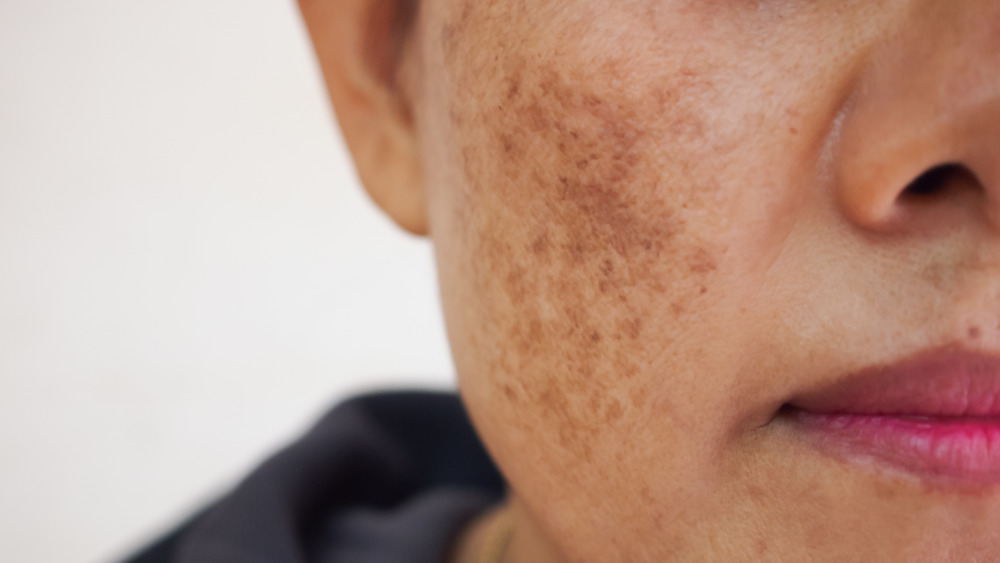Here's What Really Causes Melasma
If you're experiencing the skin condition melasma, you're not alone. According to Healthline, 90 percent of people who develop melasma are women, affecting an estimated six million women across the U.S. While common, melasma can cause distress, appearing as brown or grayish-brown blotches typically on the cheeks, upper lip, forehead, or chin. The discoloration is frequent in pregnant women, coining it as "the mask of pregnancy" (via Harvard Health Publishing). While melasma does not present health risks, the appearance of it can lead to poor self-esteem. We had to get to the bottom of what really causes melasma, and how to treat it.
Melasma may be caused by a large variety of factors, so it is helpful to check off what might apply to you and narrow down the possible causes. If pregnant, melasma can occur from an increase in hormones. Also, those who take hormonal contraceptives (and then obviously stop when pregnant) are also at a higher risk, according to the Cleveland Clinic.
Apart from hormonal triggers, melasma may also be caused by sun exposure. Getting too much sun can cause melasma because ultraviolet rays affect the cells that control pigment (via Healthline). Moreover, melasma can be worsened by heat and visible light, meaning sunscreen won't always protect against the condition (via Harvard Health Publishing). Further, as reported by Healthline, darker-skinned individuals are more at risk of getting melasma, as well as those with estrogen or progesterone sensitivity, and people with stress or thyroid disease.
Treating melasma
Once you narrow down the cause of your melasma, it's time to figure out how to treat it. As per Harvard Health Publishing, you should first confirm the condition with your dermatologist, and focus on getting down to the root of the issue. As Dr. Shadi Kourosh told the publication, treatments for melasma "are really pointless to do if there are still triggers in place," such as a hormonal issue or daily sun exposure.
If you recently started taking a new birth control pill, switching to a nonhormonal option like a copper intrauterine device might be beneficial to get rid of your melasma (via Harvard Health Publishing). In cases of pregnancy or birth control pills, Healthline states that melasma usually disappears on its own once hormones go back to normal. If caused by sun exposure, using a strict sunscreen regimen will be helpful, making sure to use physical sunscreens like zinc and titanium dioxide, which stop all light and wavelengths from coming into contact with your skin (via RealSelf).
There are also creams that may help melasma, including topical steroids, bleaching agents such as hydroquinone, azelaic acid, and Vitamin C and E antioxidant serums (via Harvard Health Publishing). While all of these products can be beneficial, procedures such as chemical peels, microdermabrasion, laser treatments and microneedling (per RealSelf) can be the extra push your skin needs to get rid of the discoloration — that being said, patience is key!

